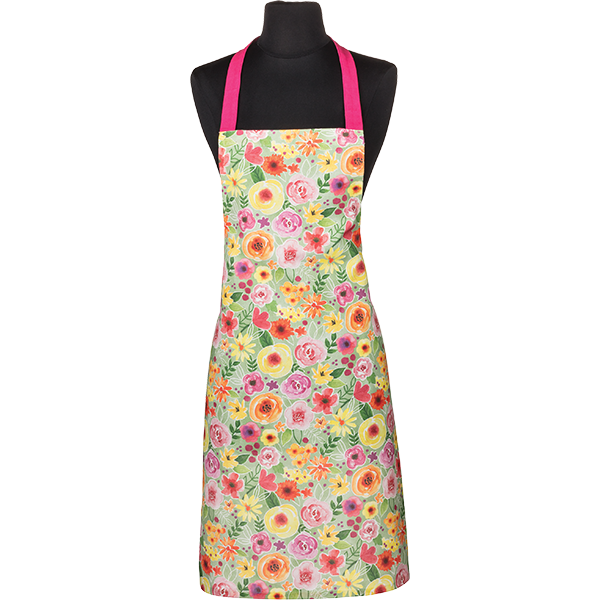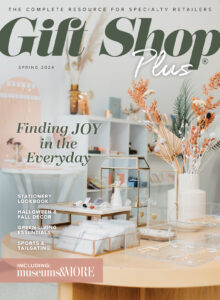The ZooStore at Woodland Park
Membership has its benefits, but these benefits don’t have to be at the expense of the destination. A few seasons ago, the ZooStore at Woodland Park Zoo in Seattle eliminated its member discount, replacing it with a Members Exclusive arrangement.
Advertisement for a limited-edition, time-sensitive program just for members is placed in the quarterly member’s magazine. Members have responded favorably to this promotion and the zoo has improved margins by saving on discounted sales.
Strong internal marketing helps balance dry spells that can often be felt by the not-for-profit sector, which sometimes seems to be at the mercy of the elements or its membership base,” said Terry Blumer, ZooStore manager. “In Seattle, weather can keep our members and tourists away, so a focus on our staff and volunteers helps us keep sales moving.”
Animal Motivation
Woodland Park Zoo itself is the fourth oldest zoo in the nation and pioneered the creation of naturalized environments for the animals. They work under the mission to “save animals and their habitats through conservation leadership and engaging experiences, inspiring people to learn, care, and act.” In 2008, over 1.1 million visitors explored a variety of “biomes,” where they could interact with animals in the context of their original habitats.
“The ZooStore is an extension of the guest’s experience and often is the first and last place they come into contact with staff other than Admissions,” Blumer said. “We strive to fully integrate all aspects of the zoo’s operations, including the store experience, into one seamless positive guest experience.”
The ZooStore retail division consists of a 3,000-square-foot main store that is open all year. During the summer season, retail is expanded to encompass one or two exhibit-specific themed posts and one to three kiosk carts. The main store has been designed to provide a visually stimulating space that evokes a
sense of discovery and the exotic.
“We’re driven by a highly focused perspective on animal-related merchandise and strict attention to the zoo’s mission,” Blumer said. “The store is very tuned into the institution’s educational mission and the merchandise mix reflects that. The ‘Conservation Commerce’ branding campaign, which has been in development over the course of the last nine years, has also placed the ZooStore front and center of socially responsible consuming.”
Blumer noted that clothing as a category seems to be back up again and PVC continues to do well for them. A high expectation of quality and value coupled with realistic portrayals of animals has made the ZooStore a destination place for plush, with sales of clothing and general souvenirs following close behind. Specifically, plush under $20 and clothing between $16 and $24 represent the strongest price points, with souvenirs falling into the general $3-15 range.
The ZooStore makes sure to always offer sufficient pricing options for all customers. Blumer also advised not to be afraid to hold your price ground in times of economic uncertainty, as people are still shopping — they’re just demanding even greater quality and value in the goods they purchase and how they’re presented.
“Plush is cross-merchandised at various times throughout the year,” Blumer explained. “It is relegated to an area away from the main entrance so that it will help draw traffic into the store. Clothing and souvenirs bracket a central gift area focused specifically on goods that benefit various social, ecological and/or direct animal conservation efforts. I call this centerpiece area ‘Conservation Commerce’ and it draws in adults who might otherwise stay outside of the shop.”
In addition, each season the Woodland Park Zoo opens a new exhibit and/or seasonal program. Custom merchandise is developed to reflect the unique features of the season such as species focus, cultural and natural environments and other key points they feel are pertinent.
Because non-profit budgets are usually very tight, Blumer usually only travels to one or two shows a year. With the West Coast shows being more accessible to him, he tends to favor the San Francisco International Gift Fair, as he feels the selection is usually very strong.
“There’s something about the show displays that seems more creative and unique,” Blumer said. “It’s a good place to get merchandising ideas for the store. Trade magazines also keep me informed of emerging trends, and we enjoy the support of a great sales rep base and the Zoo and Aquarium Group (ZAG) network of information.”
Higher Education
Running a small, profit-centered business embedded in a larger non-profit organization requires constant education at all levels. In addition to a staff of five full-time employees and up to 30 temporary employees during peak season, the store utilizes volunteers who Blumer personally trains on the multiple stories behind the conservation commerce goods.
“These wonderful volunteers help echo the conservation messages that guests have encountered as they stroll about the zoo grounds observing animals, reading information panels and interacting with interpreters and docents,” Blumer said. “I am fortunate in that many of the staff and volunteers have a definite interest in what we do here at the store. They recognize the importance of earned revenue as a means to helping the institution reach its goals.”
Blumer shares a weekly “dashboard” view of the financial performance of the store to help staff and volunteers understand the store’s challenges and successes. For the immediate staff, he likes to be as transparent as possible and share as much information as he can with them. With the exception of salary information, he likes to go over all aspects of the operating budget, feeling that this is much more inclusive and helps them to understand the roles they play in the store’s success.
“I utilize a series of daily and weekly spreadsheets that show various perspectives of the store’s performance and share these with my peers and director,” Blumer said. “I also monitor public company performance, particularly the mass market retail industry, as we share a common customer demographic.”
The zoo has also embarked on a comprehensive customer service training program, as the role of front line staff is critical to guest perceptions. Mandatory orientation, as well as follow-up group and personal discussions, help the ZooStore to stay fresh throughout the busiest times of the season.
“If you constantly strive for a quality experience for your guests, they will see the value in what you have to offer,” Blumer said. “I view the store as the final send-off and opportunity to help our guests respond to an individual call-to-action through their actions — making educated purchases that will impact change in a positive manner.” “























